
Salty Sam’s Fun Blog for Children
Number 359
Walking Across the Fields
Hello Everyone

Well, l hope you all had a lovely Christmas, we did.
We ate a lot and laughed a lot and watched a lot of lovely television programmes.
For some people it is really horrible to go back to work after all the festivities. The mornings are dark and the weather cold and miserable.
Luckily, it is not a problem that l have – because l work from home!
Maybe l should say in my home to be more accurate.
ln fact, if the weather is really, really bad l can’t even leave my home!
l managed to get across the sea to spend time with my family this Christmas. l took Barney with me of course.
Sometimes, when the children are getting a bit noisy, he likes to find a nice quiet corner of Auntie Alice’s cottage to have a little snooze. So he is very happy to come with me.
But this week, we all made the effort to take a nice bracing walk across the fields and we went right up to Farmer Jenkin’s farm and wished his family a happy New Year.
We must have walked off a lot of all that pudding we ate – and then we came home with some more food!
We bought some of his wife’s lovely cheese from her dairy and brought it back to Auntie Alice’s cottage where we had cheese on toast for supper – yummy!
But the long walk did do us good, even though we had to clean a lot of mud off our wellies when we got back!
We are very lucky that the fields around Rocky Bay are really pretty.
One of the reasons for this is that they are lined with hedgerows.
Of course, the way that fields look today is not how they have always looked.
Their appearance has changed over the centuries. Did you know that?
We have field boundaries in our part of the country that go back probably over 2,000 years. Sometimes these ancient stone walls have hedgerows growing on top of them.
Since people have farmed animals, there have been fields.
This is because when animals were taken from the wild and domesticated, the farmers did not want their animals to wander off, so they penned them in.
With large flocks and herds, you need plenty of space for them to move around and plenty of grass for them to eat in the summer. lf the animals can feed themselves, it means people don’t have to and that means less work for the farmer.
Some of the fields had to be made by clearing woodland. This was more easily done in some areas than others. You will see a lot of ancient settlements on the chalk hills in the southern parts of England, for example.
The Romans planted hedgerows to create enclosures for stock, and the practice continued to some degree through the centuries that followed.
Hedges last better than fences because living plants will renew themselves, whereas fences have to be replaced.
ln fact, some farmers trim their hedges about February time every year to keep them in check. Left to their own devices hedges will drop seed and start spreading outwards. They will get thicker and thicker until they look more like a wood.
Any regular-shaped field set up before the Saxon Era is referred to as a Celtic Field. You can still see these on maps today.
ln Saxon times – about 1,500 years ago – when crops were planted they were planted in long strips.
Each person, or family, in the village would have their own strip and be responsible for ploughing it, planting it and harvesting what grew.
lf one man ploughed over another’s land, there would be ructions!
lf a dispute like this occurred, a meeting would be held to discuss the matter.
The meeting would be held in the Chief’s house. His house was called ‘The Hall’ and it is where the villagers would congregate to hold what we would now see as a court of law. Everybody would say what they thought about the matter and a ruling would be made to stop the arguing.
ln mediaeval times, people continued to plant crops in ploughed strips. The fields at this time were called ‘open fields’.
The peasants were allocated land by the rich and powerful landowners. An overlord then had the right to ask the peasants to join him to form an army at any time he wanted to.
lt wasn’t until Henry Vll and his son Henry Vlll formed a national army and took control of the whole country in a way that no monarch had done before, that this practice stopped.
lf a peasant or yeoman had land around his house, he would practice what we call today ‘companion planting’.
(A yeoman was a commoner – or man who was not nobility, who owned a nice house and a good parcel of land.)
The planting might have looked a bit messy to our eyes but the plants lived happily together. The plants were vegetables and herbs and flowers all mixed in together.
We know that planting marigolds near carrots is a good idea. Mediaeval and Tudor gardeners knew about this too.
ln areas that have very steep slopes, ploughing can be very difficult or just about impossible. ln these areas, animals can still be kept. Sheep don’t need as much looking after as some other animals and are very able to live on steep, grassy slopes and hillsides.
You will see lots of sheep farming in the Pennines for example. The Pennines are a ridge of hills that run down the centre of northern England. They look a bit like a spine when you look at them on a map.
During the century between 1750 and 1850, after Parliament had passed a law called The Enclosures Act, lots of people who owned large tracts of land began implementing frenzied hedge planting schemes to mark their property boundaries.
ln some ways, the practice improved the efficiency of farming methods but some of the tenants were displaced and forced to go and live in towns. At the same time, the lndustrial Revolution was starting and towns and cities needed these people to work in the factories.
The character of the English countryside was totally changed.
But later, many of the hedges that had been planted were lost during the Napoleonic Wars when more land was needed for food production.
Even more hedges were lost in World War ll, as Britain strived to become as self-sufficient in food production as possible. Enemy ships, submarines and sea mines tried to sink supply ships bringing food to Britain. The men who brought food in risked their lives, so every piece of land that could be used for food production was employed to do so.
City parks were used to grow wheat and potatoes.
People everywhere removed rose beds from their back gardens and replaced them with vegetable plots and chicken coops.
During the implementation of The Enclosures Act, a lot of common land was lost. You will still see commons today. They are a bit like public parks. Historically, commoners had the right to graze their animals on them. Nowadays, especially in towns, they are used more by dog walkers than peasants grazing their pigs.
The mass removal of hedges from the landscape over the last few decades has had an adverse affect on wildlife. Hedgerows play an important role in feeding, protecting and housing animals like hedgehogs, mice and voles, and also all sorts of different birds and insects, creating much needed resources to support a rural ecosystem.
Auntie Alice has a rotten old fence at the bottom of her garden and she decided, as we were all chatting together on our walk, that she would replace it with a hedgerow.
We all thought it was a good idea, and promised to help her as soon as the weather gets a bit warmer and the ground is not so hard.
lf you like my blog, please support it by telling all your friends and followers about it.
Thank you!
And see you again next Fun Friday!
Love and kisses
Salty Sam

www.christina-sinclair.com


Bill and Bob’s Joke of the Week![]()
![]()
Bill: Did you know that Uncle Arthur used to be a shoe repairer?
Bob: No?
Bill: He had to leave his job though.
Bob: Why?
Bill: He found it sole-destroying!

Salty Sam © Christina Sinclair 2015
Unauthorized use and/or duplication of material from this blog without express and written permission from this blog’s author and owner is strictly prohibited.
Links may be used to www.christina-sinclair.com

Picture Gallery
 Saxon Village
Saxon Village
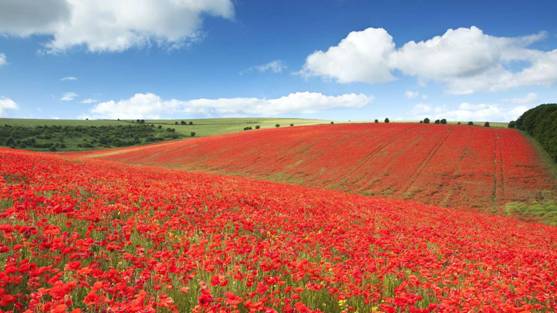 Poppies like growing in soil after it has been disturbed
Poppies like growing in soil after it has been disturbed
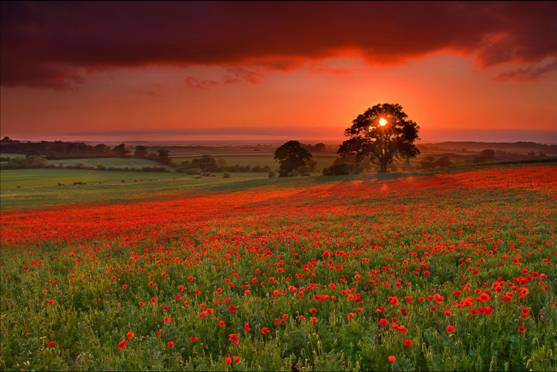 Fields can be bordered by hedges of fences
Fields can be bordered by hedges of fences
and you can find large trees inside them too


 THE SALTY SAM NEWS DESK
THE SALTY SAM NEWS DESK

When we got home, the children remembered the seeds that they had collected from the walk that we had taken back at the end of September.
We had stuffed out pockets full with them and then left them in some boxes in Auntie Alice’s house.
She had put them in her unheated greenhouse.
Then we had forgotten all about them.

We managed to find them and decided to use them to make our own hedgerow!
We all went down to the bottom of the garden to look at the old fence.
Auntie Alice said that instead to pulling it out, it might be better to just plant each side of it.
It could be used at a tree support for now and as it gets covered in plants and decays away, it will be overtaken and hidden by the hedge.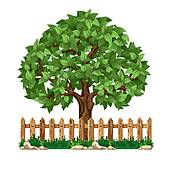 If the seeds we collected grow, then all the plants in the hedge will have been for free.
If the seeds we collected grow, then all the plants in the hedge will have been for free.
This is a good thing when you have a garden as big as Auntie Alice’s.
She said that it would also be a good idea to put about three or four hedgehog houses at intervals along the bottom of the fence and the plants would cover them and keep them sheltered from the worst of the winter weather.
In time, she would be sure that there would be hedgehogs at the Rocky Bay Animal Rescue Shelter needing a new home. She could make sure they had water to drink in a little dish. She could bring water out to them when she gave water to her chickens and her bees.
If any badgers wanted to make a home under the hedge too, they would be able to make their own.
There would be plenty of room to grow a hedgerow at the bottom of her garden she was sure.
She would find some plans to build hedgehog homes and buy some wood.
I think I know who is going to end up making them, don’t you?


*********************
TO ADVERTISE ON THIS BLOG
PLEASE CONTACT:
christina.sinclair.ads@aol.co.uk
*********************


Hobby Time
Do you know those really lovely foil wrappings you get on some sweets and chocolates? They have pretty patterns and colours.
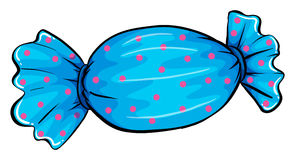
Emily really likes them and collects them from members of the family when we share a big tub of chocolates and toffees from the Rocky Bay Supermarket.
Then she hit upon an idea of how to use them in a picture.
She drew a picture of a house on some thin card and then cut out the windows.
She stuck the sweet wrappers behind the windows to look like patterned curtains and then stuck the whole picture on another piece of card which she made into a divider page to put in her planner for next year.
She said that it would mark the section where she would list all the homework she had to do for Miss Pringle.




lt’s the Weekend!

HOW TO MAKE A SKl SWEATER FOR A 12” DOLL
If your doll is going skiing this winter, this is a really lovely ski jumper for her to wear.
The waist panel is a bit difficult, so if you are a knitting newbie you might want to knit a jumper with just the stripes instead.
If you do knit the central panel, make sure that your knitting does not get too tight as you work, otherwise the jumper will not lie flat.
If you knit the jumper with a white or light colour background and dark coloured stripes, it will have a very different look.
Whichever colours you choose to make the chequerboard pattern in, you must make sure that the yarns have a similar thickness. Some dk yarns are thicker than others.
SKI SWEATER FRONT AND BACK THE SAME (KNIT TWO)
Using 3¾mm knitting needles and red dk yarn cast on 16 stitches
(knit 1, purl 1) repeat the last 2 stitches to the end of the row
Repeat the last row 3 times (4 rows of 1×1 rib)
Change to 4mm knitting needles and white dk yarn
Knit 1 row
Knit 1 row
Change back to red yarn dk yarn
Knit 1 row
Purl 1 row
(Knit 1 stitch in black dk yarn and then one in white dk yarn) repeat these 2 stitches to the end of the row
(Purl 1 stitch in black dk yarn and then one in white dk yarn) repeat these 2 stitches to the end of the row
Repeat these last 2 rows twice
Change back to red yarn dk yarn
Knit 10 rows of stocking stitch
Change to white
Knit 1 row
Knit 1 row
Change to red
Knit 4 rows of garter stitch
Cast off
SKI SWEATER SLEEVES (KNIT TWO)
Using 4mm knitting needles and red dk yarn cast on 10 stitches
Knit 1 row
Knit 1 row
Knit 1 row
Purl 1 row
Change to white
Knit 1 row
Knit 1 row
Change to red
Knit 1 row
Purl 1 row
Repeat the last 4 rows 4 times
Cast off
COWL (KNIT ONE)
Using 3¾mm knitting needles and red dk yarn cast on 22 stitches
(knit 1, purl 1) repeat the last 2 stitches to the end of the row
Repeat the last row 3 times (4 rows of 1×1 rib)
Change to white
Cast off
TO MAKE UP
Sew the garment together using over-sew stitching with right sides together
- Sew together the shoulder seams making sure there is room for your doll’s head to go through
- Sew the tops of the sleeves to the shoulders (between the top white lines on the front and back)
- Sew the side and underarm seams
- Sew the ends of the cowl together
- Tidy all the ends of yarn into the seams
- Turn the garments the right way out
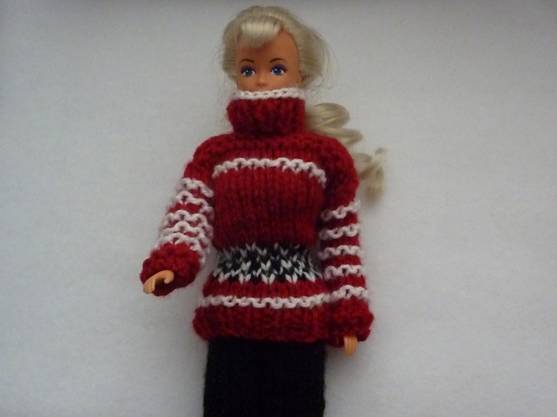
Please note that the material on this blog is for personal use only.
It is a copyright infringement and, therefore, illegal under international law to sell items made with these patterns.
Use of the toys and projects is at your own risk.
©Christina Sinclair Designs 2015

See you again next year!



